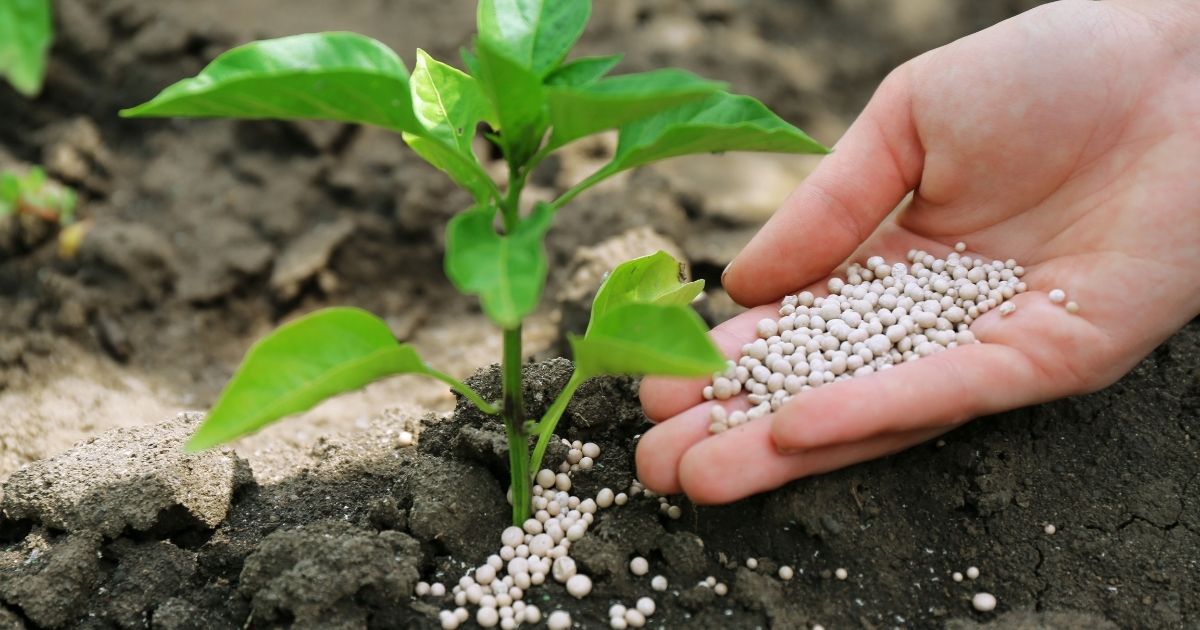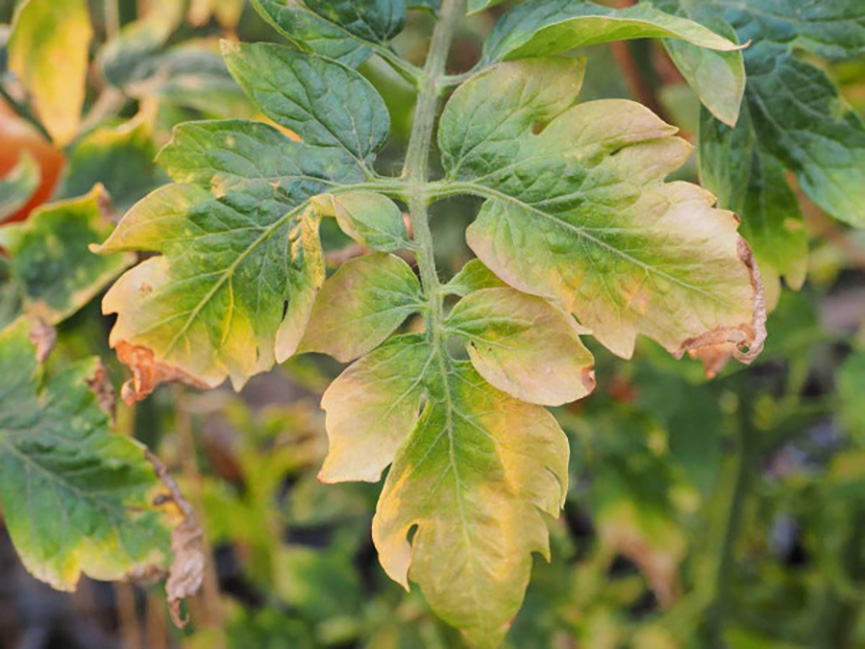Have you ever noticed your plants looking less vibrant despite your best efforts? You might be dealing with over-fertilized soil.
While fertilizers are a gardener’s best friend, too much can turn them into a foe. Over-fertilization can lead to a host of problems, from wilting leaves to stunted growth, leaving you frustrated and your plants struggling. But how can you tell if you’ve crossed the line?
Knowing the top signs of over-fertilized soil can save your garden and bring back the lush, green paradise you desire. Dive into this article, and discover how to spot the warning signs before it’s too late. Your plants will thank you for it!

Yellowing Leaves
Yellowing leaves are a common sign of over-fertilized soil. They indicate stress in plants. This stress affects their ability to thrive. Observing changes in leaf color is crucial. It helps in identifying the soil issues early. Addressing these changes can prevent further damage.
Yellow Leaves With Crispy Edges
Leaves may turn yellow and develop crispy edges. This often happens due to nutrient overload. Excess fertilizers can scorch leaf tips. They lose moisture and become brittle. The plant struggles to maintain healthy foliage.
Yellow Leaves With Brown Spots
Brown spots may appear on yellow leaves. This is another sign of nutrient burn. The spots indicate cell damage. High salt concentration in fertilizers causes this. It disrupts the plant’s normal functioning.
Yellow Leaves With Drooping
Drooping leaves often accompany yellowing. They suggest the plant is under stress. Over-fertilization affects water uptake. Leaves can’t stay firm and upright. They lose their vibrant green color and droop.
Yellow Leaves With Stunted Growth
Stunted growth can follow yellowing leaves. Nutrient imbalance hinders development. Plants may fail to reach full size. They lack essential nutrients for growth. Correcting the soil composition is necessary.
Yellow Leaves With Weak Stems
Weak stems are a result of over-fertilization. The plant’s structure becomes compromised. This makes it vulnerable to breakage. Yellowing indicates weakened health. Plants require balanced nutrients for strong stems.

Salt Crust On Soil
White salt crust on soil indicates over-fertilization. This crust forms when excess nutrients accumulate. Soil balance becomes disrupted, affecting plant health.
Spotting a salt crust on soil can be a clear indicator of over-fertilization. This crust forms when excess salts from fertilizers accumulate on the soil surface. It’s not just an eyesore; it can harm your plants by blocking water absorption and causing nutrient imbalances.What Causes Salt Crust On Soil?
Salt crust appears when soluble salts from fertilizers are left behind after water evaporates. Frequent watering can push these salts to the surface. Over time, these deposits can create a visible white or grayish layer.Effects Of Salt Crust On Plants
Salt crust can lead to poor plant health. It can cause leaf burn, where the edges turn brown and crispy. Plants may also show signs of wilting even with regular watering.How To Identify Salt Crust On Soil
Look for a white, powdery layer on the top of your soil. If you touch it, it may feel gritty or crusty. This is a telltale sign that salt has accumulated.Steps To Remove Salt Crust
First, gently scrape off the salt layer with a small tool. Next, improve drainage by mixing sand or organic matter into the soil. Consider flushing the soil with distilled water to dissolve and wash away excess salts.Preventing Future Salt Buildup
Use fertilizers sparingly and follow package instructions. Opt for slow-release fertilizers to reduce salt buildup. Regularly check your soil and adjust your fertilization routine as needed. Have you ever noticed a mysterious white layer on your garden soil? It might be worth investigating. By understanding and managing salt crust, you can ensure your plants remain healthy and vibrant.Stunted Plant Growth
Stunted plant growth can be a puzzling problem for gardeners. One day your plants are thriving, and the next, they seem to be stuck in a state of limbo. You might be unknowingly over-fertilizing your soil. This common mistake can hinder plant development, leaving them unable to reach their full potential.
Yellowing Leaves
Yellow leaves are often an early sign that your plants are receiving too much fertilizer. These leaves struggle to process the excess nutrients, leading to a sickly appearance. You can try reducing the amount of fertilizer to see if the yellowing improves.
Burnt Leaf Tips
Have you noticed crispy, burnt tips on your plant leaves? This is a classic symptom of over-fertilization. The nutrients in the soil become overwhelming, causing the leaf edges to dry out and die. It’s crucial to monitor your fertilizer application to avoid this damaging effect.
Weak Root System
Healthy roots are the foundation of thriving plants. Over-fertilized soil can lead to weak roots, unable to support robust growth. If you suspect your plants have poor root systems, consider testing your soil to understand its nutrient composition better.
Slow Growth Despite Ideal Conditions
Sometimes, plants don’t grow as expected, even when all other conditions are perfect. If your plant growth is sluggish, it might be time to reassess your fertilization routine. Can you identify any changes you’ve made recently that could be impacting growth?
Personal Experience: The Tomato Plant Saga
I once over-fertilized my tomato plants, thinking more nutrients would boost their size. Instead, they stopped growing altogether. It was a lesson learned the hard way. You might want to experiment with reducing fertilizer gradually to see if growth resumes.
Identifying the signs of over-fertilization can be a game-changer for your gardening success. Are you seeing symptoms in your plants? Consider adjusting your fertilization approach and watch your garden flourish again. Remember, sometimes less is more when it comes to nurturing your plants. What steps will you take to ensure your plants grow healthily?
Root Damage
Root damage is a critical sign of over-fertilized soil. When plants absorb too many nutrients, their roots suffer. Over-fertilization disrupts the natural balance. This leads to a series of problems for your plants.
Roots Turning Brown Or Black
Healthy roots are white or light-colored. Over-fertilized roots often turn brown or black. This discoloration is a clear warning. It indicates nutrient overload and damage.
Roots Becoming Slender And Weak
Over-fertilized soil causes roots to thin out. They become weak and slender. This makes it hard for them to support the plant. Without strong roots, plants struggle to thrive.
Roots Failing To Anchor Properly
Healthy roots anchor plants firmly. Over-fertilization weakens this grip. Roots may fail to secure the plant in soil. This instability can lead to plant collapse.
Roots Exhibiting Signs Of Rot
Rot is another sign of root damage. Over-fertilized roots often rot. This happens due to excessive nutrient absorption. Rotting roots can kill the plant.
Roots Having Stunted Growth
Over-fertilization stunts root growth. Roots fail to grow as they should. Limited growth affects nutrient and water uptake. Plants become weak and unhealthy.

Conclusion
Recognizing signs of over-fertilized soil is crucial. Plants may suffer. Yellowing leaves, stunted growth, and wilting are key indicators. Soil health impacts plant vitality and yield. Regularly check your soil’s condition. Balance is important for plant health. Test the soil to adjust fertilizer use.
Less is often more when fertilizing. Always follow recommended guidelines on fertilizer packages. Healthy soil supports robust plant growth. Ensure your garden thrives by maintaining proper soil care. Your plants will thank you with vibrant blooms and strong growth.


